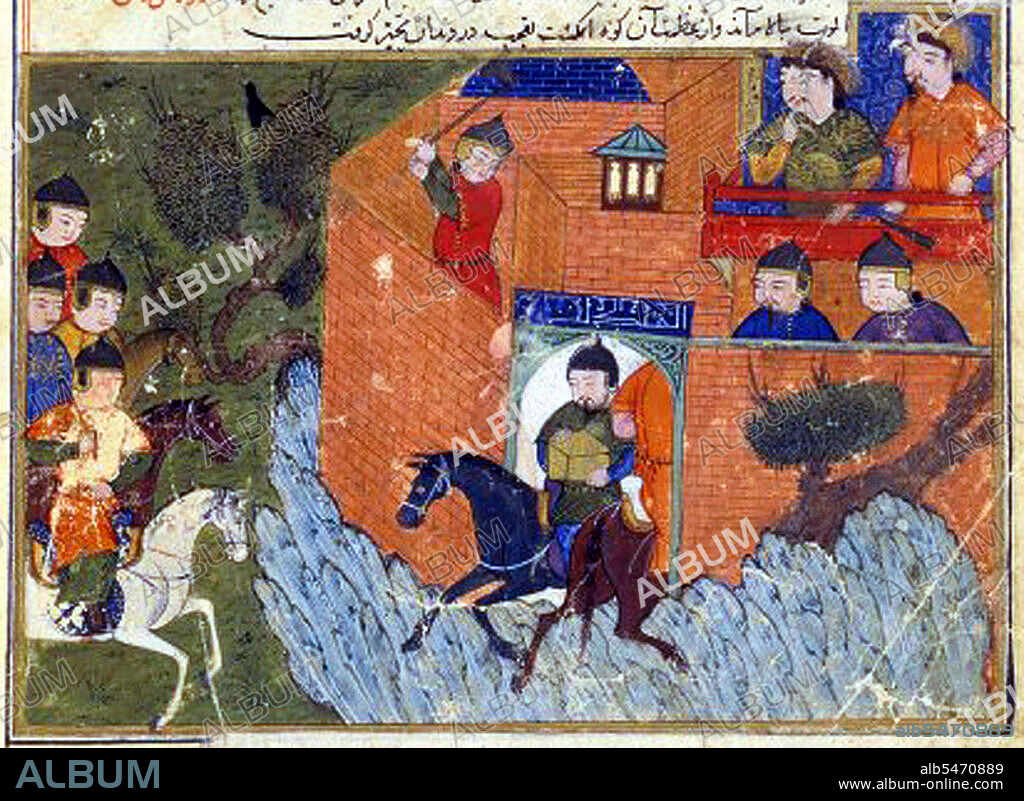alb5470889
The capture of Alamut.

|
Add to another lightbox |
|
Add to another lightbox |



Title:
The capture of Alamut.
Caption:
Alamut was a mountain fortress located in the South Caspian province of Daylam near the Rudbar region in Iran, approximately 100 kilometres (60 mi) from present-day Tehran, Iran. The name means 'Eagles Nest'. Under the leadership of Hasan-i Sabbah, Alamut became the site of intense activity for the Shia Nizari Ismaili Muslims, along with a smaller subgroup known as the Assassins, between 1090 and 1256 AD. During the medieval period, the castle functioned as the major stronghold of the Nizari Ismaili state. In 1256, Ismaili control of the fortress was lost to the invading Mongols and its famous library holdings were destroyed when the castles library was condemned to be burned by Ata-Malik Juwayni, a servant of the Mongol court. Sources on the history and thought of the Ismailis in this period are therefore lacking and the majority extant are written by their detractors. After the Mongol destruction, the castle was of only regional significance, passing through the hands of various local powers. Today, it lies in ruins, but because of its historical significance, it is being developed by the Iranian government as a tourist destination.
Credit:
Album / Pictures From History/Universal Images Group
Releases:
Model: No - Property: No
Rights questions?
Rights questions?
Image size:
4900 x 3579 px | 50.2 MB
Print size:
41.5 x 30.3 cm | 16.3 x 11.9 in (300 dpi)
Keywords:
ALAMUT • ANT. OR.: IRAN • ARMS • ARMY: SOLDIER • ART • ARTS • ASIA • ASIAN • ASSASSINS • CASTLE • FORTRESS • HISTORIA UNIVERSAL • HISTORICAL • HISTORY • HUNDRED YEARS WAR • IRAN • IRANIAN • ISLAM • ISLAMISM • ISLMAILI • ISMAILISM • JAMI AL TAWARIKH • LEGEND • MILITAR • MILITARS • MILITARY • MONGOLIA • MONGOLS • MUSLIM • MYTH: PERSIAN • PAINT • PAINTING • PEOPLE'S ARMY SOLDIER • PERSIA • PERSIAN ART • PERSIAN MYTH • PERSIAN • RASHID AL DIN • RELIGION • SEEVENER • SHI'ISM • SHI'ITE • SHIA • SOLDIER • SOLDIERS • SOLIDER • TROOPS • WAR • WARFARE • WARRIOR • WARRIORS • WEAPON
 Pinterest
Pinterest Twitter
Twitter Facebook
Facebook Copy link
Copy link Email
Email

